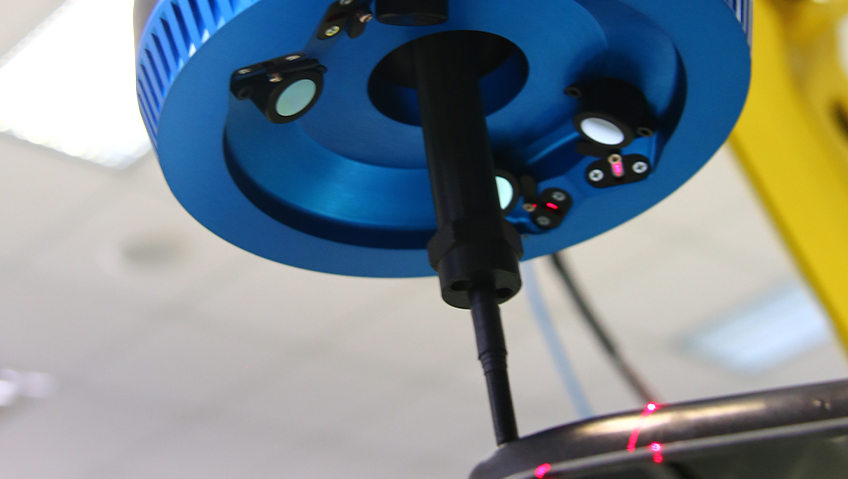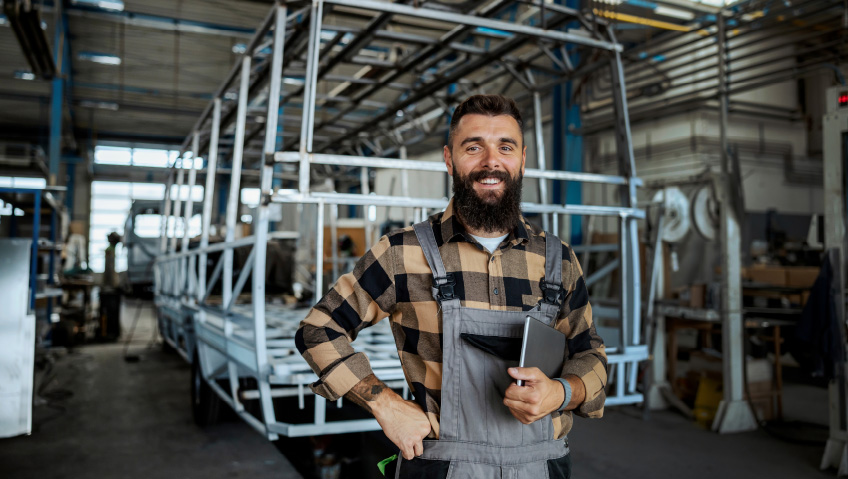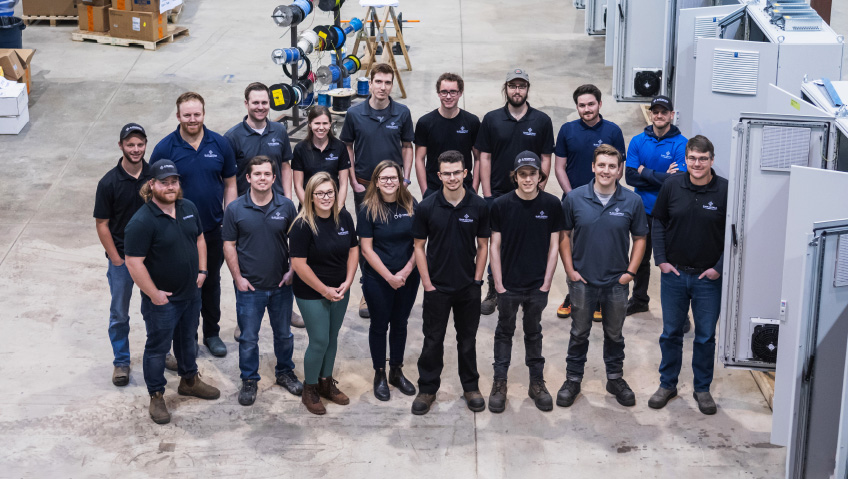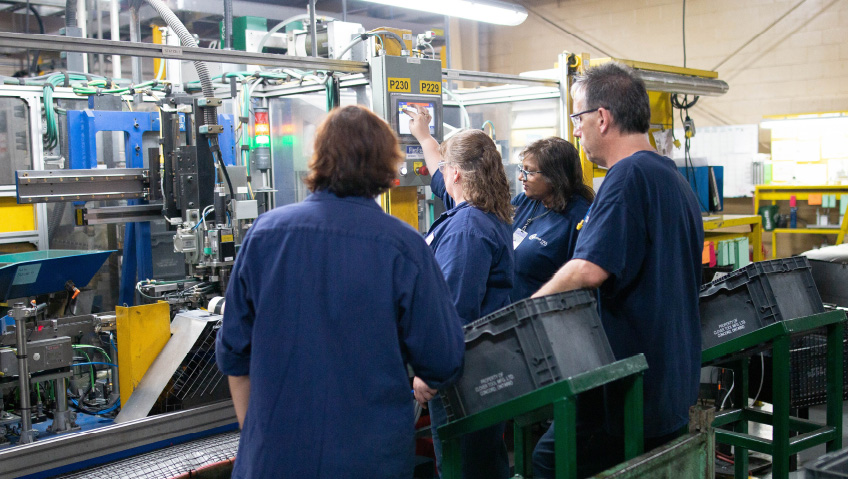Coherix, Inc., of Ann Arbor, Michigan has been consolidating its position as a leader in the three-dimensional machine vision sector. As profiled in the February 2020 issue of Manufacturing in Focus magazine, the firm’s technological solutions allow machines to ‘see.’
Coherix designs, develops, and manufactures 3D machine vision solutions for automated assembly and manufacturing operations. Its systems are primarily used for robot guidance and control of the adhesive and sealant dispensing processes. The company’s Predator3D provides adaptive process control to ensure the accuracy of volume material dispensed and that the dispensed bead is in the correct location on the part. The company’s wares are popular in the electronic, automotive, and semiconductor industries.
Despite the pandemic, sales are up by forty percent this year. Sales are being driven by “a significantly expanded customer base… If you have a rapidly expanding customer base and get all the follow-up business, that’s how you get a forty percent increase even in a COVID year. Once COVID is over, [we expect] exponential growth,” states company Founder, Chairman and Chief Executive Officer Dwight Carlson.
Clients like Coherix for a simple reason, he explains. “Our product is far superior to anything else out there, and our support to the customer is light-years better than any of our competition. Most of the current competition is 2D… We are replacing 2D bead inspection systems because they do not work in this application.” The company’s high-speed sensors gather real-time 3D, 360-degree images of adhesive and sealant beads as they are dispensed, enabling adaptive process control.
While 2D machine vision has been around longer, a 3D system is more adept at measuring bead height, width, and volume. A 3D machine vision system is also better able to perform in spite of changes in ambient light or part color during production runs.
Clearly, plenty of businesses like what Coherix has to offer. The company’s customer list includes a roster of huge original equipment manufacturers (OEMs), including Toyota, Honda, Ford, and Panasonic. Coherix also sells to adhesive dispensing equipment makers and vision system integrators.
Things are going so well that the team has set their sights on an ambitious goal, working hard to dominate its “first market vertical,” explains Carlson.
The sector they are targeting is industrial adhesive and sealant dispensing, and they are already a significant force in this field thanks to the Predator3D machine vision system and cutting-edge software. The robot moves the Predator3D system which is attached to the nozzle that dispenses adhesive or sealant.
According to the Coherix website, Predator3D machine vision is used by automotive makers worldwide for applications involving “body structural adhesives, powertrain form-in-place gaskets, windshield urethane, and battery assembly for electric vehicles.”
“We continually enhance [Predator3D] through software,” says Carlson. “The Predator collects 3D images – up to 1,000 per second. We’re bringing in a tremendous amount of data. The sensor collects data very fast, but then, what are you doing to do with the data? It’s all about software, how to control, how to display, and how to analyze the data. That’s all software.”
Predator3D features the company’s i-Cite software system, which analyzes bead height, width, location, volume, and other features, to spot errors. The i-Cite software also powers the Coherix Robust3D machine vision system which contains 3D sensors to visually scan part assemblies for inspection. This data is relayed to software and is used to create 3D models which are then analyzed for part error.
Other cutting-edge company software is designed to determine adhesive bead volume and location and robot path. Software programs such as RobotOptimize and RobotAssist continue to be tweaked and enhanced. RobotOtimize creates the optimal dispensing robot paths and can be accessed through a laptop or via the Predator3D human-machine interface. RobotAssist speeds up robot programming and reprogramming procedures when parts need to be changed.
The company is based in Ann Arbor, Michigan, and Carlson describes its hometown as the perfect location for a machine vision business. Not only is Ann Arbor home to the world-class University of Michigan, but the U.S. government has poured funds into local companies doing research and development for the military. These research efforts have contributed to a body of scientific knowledge that benefits Coherix, which can also access a broad pool of local talent.
Coherix has subsidiaries in Shanghai, Munich, and Singapore and a distribution partnership with Japanese firm Marubeni. Since the spring, sales have expanded into Thailand, India, South Africa, and Argentina. China remains the strongest market – sales to China will be up an estimated seventy percent this year and the company is adding staff in that country – followed by the Asia-Pacific region, Europe, and the Americas.
The arrival of the COVID-19 pandemic has been the most unexpected development this year. The virus has had a huge impact on the company’s business operations and working conditions. Among other things, it has “slowed down communication. When you are an innovative manufacturing technology company like Coherix, you have very intimate relationships with end-users,” states Carlson.
Traditionally, company representatives liked to meet existing and potential customers in person, but now find themselves largely limited to discussing business and technical matters on online platforms such as Zoom. The situation has made international travel impossible and has also interfered with the ability to do in-person client support and training.
The company’s primary concern, however, is keeping its workforce safe, which is why a strict new health protocol was imposed. Anyone entering the facilities must have their temperature tested. Masks are worn indoors, and personnel are encouraged to wash their hands frequently. Hand sanitizer has been made available, and surfaces are cleaned each morning.
The company also takes extra precautions to ensure its staff members are safe on the now-infrequent occasions when they meet a client in person. When visiting customer worksites, officials take precautions, such as social distancing and wearing masks, regardless of what policies the client may or may not have in place.
Coherix stands to benefit from two key manufacturing trends: a growing emphasis on making lightweight planes and cars and the rising popularity of electric vehicles (EVs).
Lightweighting is all about using parts made from composites that are tough and durable but weigh less than traditional manufacturing materials. The goal is to enhance fuel efficiency by producing lighter automobiles and airplanes. In lightweighting manufacturing, parts of dissimilar materials are often attached with adhesives or sealant, instead of being welded together. Greater demand for adhesive and sealant bead dispensing equipment has led to greater demand for 3D machine vision systems.
EVs meanwhile have gone from being niche oddities to commonplace consumer items. Automotive manufacturers are scrambling to enter the electric-car market, and Coherix solutions are being increasingly used in electric vehicle battery assembly applications involving adhesive and sealant.
“We are into [EVs] in a big way. Dispensing in EV battery manufacturing is exciting. We’re working with a lot of the major OEMs and first tiers,” says Carlson. “There are [dozens] of adhesive dispensing applications in the battery manufacturing process.”
Coherix employs roughly seventy people and is quite excited about a recent hire. In October, it was announced that Jürgen Dennig, who has spent years working with machine vision and automatic dispensing equipment in the automotive sector, would be joining the team. Dennig has taken on the role of vice president of global sales and marketing and is responsible for building up an international team of account managers.
COVID has forced the company to change its promotional strategy. In the past, representatives regularly attended trade shows and did presentations. While much of this in-person activity has been curtailed, Coherix maintains an active online presence and participates in online seminars and conferences held as an alternative to in-person industry events.
There are also other problems to be overcome by the company. “Finding and recruiting the type of talent that we need around the world: that’s a big challenge. Then it’s training those people as fast as you can. Developing products is always challenging if you do innovative manufacturing technology. The next largest challenge would be convincing huge corporations to do anything innovative.”
For all that, Carlson takes a positive view and offers an optimistic five-year forecast. “We are doing our planning right now, and we expect revenue in five years to be slightly over $100 million,” he states. “The $100 million was our first annual revenue milestone that we set at the beginning of the company. We can achieve that with our first vertical market, which is the dispensing of adhesives and sealants. We’re very focused on that right now, and then we’ll select our second market vertical.”






